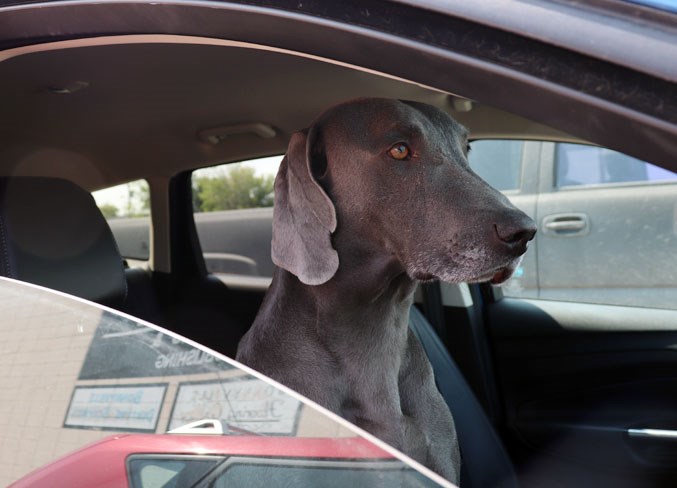It’s not often local RCMP, bylaw, or the SPCA are called regarding pets being left in hot vehicles, in fact, it’s only happened once so far this summer.
Although the Bonnyville RCMP couldn’t confirm why the area has had so few complaints regarding the issue, Sgt. Kim Hillier said it’s likely due to increased knowledge.
“I think people are becoming more conscious that they shouldn’t leave their pets in hot vehicles.”
The single report officers responded to since May was in town, and by the time police arrived, the owner was there.
“The dog was okay and the owner was spoken to about the dangers of leaving the dog in the car,” detailed Hillier. “That’s the only one we’ve had about a dog being left in a vehicle… Obviously, the public is understanding that it’s a very dangerous practice, it’s dangerous for your animal.”
Most animal complaints go through Town of Bonnyville peace officer Shaz Khan and the MD of Bonnyville’s public safety department.
“I think in the MD, we don’t have situations where that would occur. We don’t have a lot of shopping and things like that, where people would take dogs in the car with them and then would only be in the store for a few minutes, but it runs long, it’s a hot day, and the dog is in distress in the car,” noted public safety department director Chris Garner. “It doesn’t really happen because we don’t have that type of activity going on.”
Garner confirmed the MD has yet to receive a complaint, noting he can’t recall the last report they did get.
“It’s a good thing that it’s not on the forefront of everyone’s mind,” he expressed. “It doesn’t happen in a way like you see in the cities where they have busted windows where people have dragged the dogs out and EMS is there giving the dog oxygen.”
It was a similar situation for Kahn, who started his role in January.
Since hitting the streets as the peace officer in town, he has yet to come across a dog being left in a hot vehicle.
In some cases, a concerned citizen may call the SPCA, hoping they could help the animal.
Executive director for the Bonnyville and District SPCA, Judith Rodriguez, said, “We’re just lucky someone hasn’t done it in town or around… so far, we haven’t received a single call about it.”
If someone does come across a pet that has been left in a hot vehicle in distress, she encourages them to call the town or MD to report it.
“If they’re in the MD of Bonnyville, they can call us or the police,” Garner explained. “We would check to see if the owner was nearby and could cool off the dog. If there’s no one there, we’re going to base it on the urgency of the situation. It could come down to breaking a window in order to retrieve the dog and get it some medical attention.”
Khan agreed.
“We have the resources, for example, we’re able to run license plates and call the registered owner. It’s a private property, so to speak, when it comes to vehicles. We don’t want just anyone breaking a window. We can run the plate, try getting a hold of the owner, and we can lay charges, rather than just having a concerned citizen to break a window and get inside.”
He added, peace officers are also trained to look for signs of distress in animals.
“That’s where it’s better to call an officer because we do have some training where we can determine if the animal is in distress or if it’s just an animal sitting in a vehicle,” Khan said.
If an animal in a vehicle is in distress, they will show signs of heatstroke such as panting, vomiting, and disorientation.
Rodriguez said in these conditions, an animal needs to be rushed the the vet in order to bring down their temperature in a safe way.
“The vet has all of the knowledge, but limited resources to deal with these conditions. If something happens, it’s easy to blame the vet, but the first thing is, the dog shouldn’t be in the vehicle,” she stressed.
“They can get scared. There’s lot of anxiety, and if you add to that anxiety, the heat, then the situation can escalate really fast and can be uncomfortable at the very least, to really dangerous. It depends on how hot the day is and how long the animal is in there,” continued Rodriguez.
Even if someone comes across a pet in a vehicle, Hillier noted they should never break a vehicle’s window in order to access the animal.
“We absolutely recommend that they don’t take action. This isn’t an area where it will take us an hour to get there, so we have other means of contacting the owner of the vehicle, having the license plate broadcasted in the grocery story, those types of things, those are better options than just immediately busting someone’s window.”
In the end, Rodriguez emphasized the message that “prevention is key.”
“When you’re preventing, you have 100 per cent chances of being successful. When you’re trying to fix it, unfortunately, many times the dogs don’t make it.”



